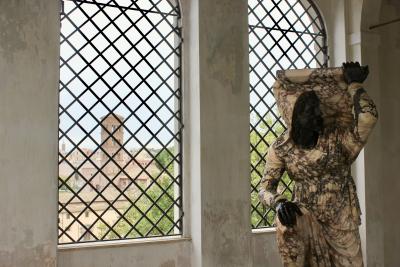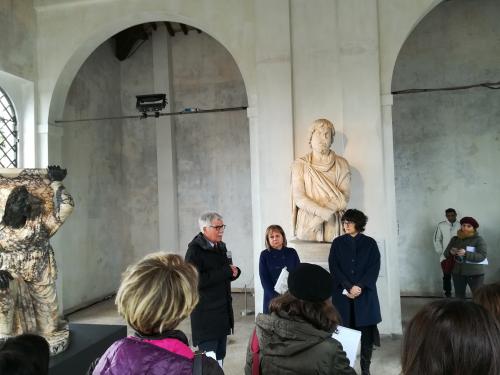Restored Farnese Gardens opened to public

ROME – A new exhibition opens on the slopes of the Palatine Hill on Wednesday, celebrating one of the lost gems of Renaissance Rome, the legendary Farnese Gardens, begun in the middle of the sixteenth century and overlooking the Basilica of Maxensius and the Arch of Titus.
The gardens were one of the most celebrated and symbolic places of the Italian Renaissance and Baroque and a vital projection of the power of the Farnese family’s power in Rome.
They were the brainchild of Cardinal Alessandro Farnese, who purchased land on the north side of the Forum, and started work on transforming the largely agriculture area into a series of stunning gardens.
The gardens fell into disrepair in the eighteenth century, becoming a source of fascination to the Romantics and European visitors on the Grand Tour.
The Archaeological Park of the Colosseum has worked in collaboration with the Ministry for Goods, Cultural Activities and Tourism to restore one prominent section of the gardens, The Farnese Aviaries. Work was facilitated by financial support from the World Monuments Fund in New York and other sources.
Laurels, cypresses, yews, citrus trees, climbing plants and Damascan roses have all been replanted to capture something of the spirit of the original gardens.
“The Palatine and its secret garden: In the charms of the Farnese Gardens,” uses the aviaries as its focal point, with a video map that pans through the gardens many sections and the aspect of the aviaries in their prime.
It likewise restores two precious marble sculptures to their original location thanks to a loan from the Farnese Collection in Naples. Perhaps the most impressive of these is the “Kneeling Barbarian,” in sumptuous black and white marble that was used for plants in the period.
Director of the Archaeological Park, Dr Alfonsina Russo, said the site was “unique in the world” and that she was delighted to play a part in the restoration of “a vision of great beauty,” before adding the project was only the first of many planned for the park.
She promised that the exhibition would be a “multimedia experience” which took visitors on a “journey through the place and the characters who came into contact with it through time.”
The curator of the show, Giuseppe Morganti, explained that the gardens were a place of “variety and precious objects” where the “cultures of the ancient and Renaissance world met.” A book with the same title as the exhibition has been compiled by Morganti to accompany the exhibition.
The show runs from March 21 to Oct 28. There is no additional charge for the exhibit, requiring only a ticket to the Forum.
tw



